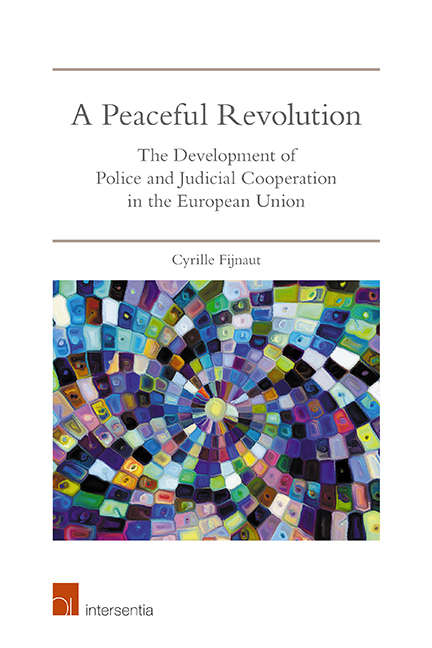Book contents
- Frontmatter
- Preface
- Contents
- List of Acronyms and Abbreviations
- Chapter 1 General Introduction
- PART I THE HISTORICAL BACKGROUND TO POLICE AND JUDICIAL COOPERATION IN THE EUROPEAN UNION
- PART II THE FOUNDATION OF POLICE AND JUDICIAL COOPERATION IN THE EUROPEAN UNION
- Chapter 4 The Treaty of Maastricht and the Brussels Programme
- Chapter 5 The Treaty of Amsterdam and the Tampere Programme
- Chapter 6 The Treaty of Rome and the Hague Programme
- PART III THE CURRENT STATE OF POLICE AND JUDICIAL COOPERATION IN THE EUROPEAN UNION
- Bibliography
- About the Author
Chapter 5 - The Treaty of Amsterdam and the Tampere Programme
from PART II - THE FOUNDATION OF POLICE AND JUDICIAL COOPERATION IN THE EUROPEAN UNION
Published online by Cambridge University Press: 09 November 2019
- Frontmatter
- Preface
- Contents
- List of Acronyms and Abbreviations
- Chapter 1 General Introduction
- PART I THE HISTORICAL BACKGROUND TO POLICE AND JUDICIAL COOPERATION IN THE EUROPEAN UNION
- PART II THE FOUNDATION OF POLICE AND JUDICIAL COOPERATION IN THE EUROPEAN UNION
- Chapter 4 The Treaty of Maastricht and the Brussels Programme
- Chapter 5 The Treaty of Amsterdam and the Tampere Programme
- Chapter 6 The Treaty of Rome and the Hague Programme
- PART III THE CURRENT STATE OF POLICE AND JUDICIAL COOPERATION IN THE EUROPEAN UNION
- Bibliography
- About the Author
Summary
INTRODUCTION
The conclusion of the previous chapter ended with a reference to the discussion about the constitutional structure of the Third Pillar, and hence its potential performance. This was obviously one of the principal issues to be discussed at the intergovernmental conference which was held in 1996 to prepare the reform of the Treaty of Maastricht in. Section 5.2 of this chapter therefore looks at the merits of that treaty and discusses the proposals that the Council and the Commission made for reshaping the Third Pillar.
Section 5.3 opens with a review of the changes that the Treaty of Amsterdam, and later the Treaty of Nice, brought about with regard to police and judicial cooperation in the constitutional structure of the Third Pillar. It then discusses the integration of Schengen into the Union's legal system and the police and judicial aspects of the policy on migration and border security, even though as a consequence of the Treaty of Amsterdam this policy had been transferred from the Treaty on European Union to the Treaty Establishing the European Community.
Section 5.4 is devoted to the various plans – most of them integrated into the Tampere Programme – that were adopted around 1998 and following the attacks of 9/11 to extend the application of the Treaty of Amsterdam to the reformed Third Pillar. It starts by describing the plans and their interrelationship. On the basis of those plans, section 5.5 reviews how police cooperation as well as judicial cooperation were strengthened, deepened and expanded between 1998 and 2004. The discussion of these two developments gives a clear sense of what the treaty accomplished in terms of policy, organisation and resources in both areas of the Union's internal security policy.
This analysis of the implementation of the Treaty of Amsterdam in relation to police and judicial cooperation is followed in section 5.6 with a discussion of how that cooperation was embedded in the programmatic approach towards a number of major crime-related problems in the Union during that period – combating crimes ranging from illicit drug and arms trafficking and terrorism to human trafficking and people smuggling.
- Type
- Chapter
- Information
- A Peaceful RevolutionThe Development of Police and Judicial Cooperation in the European Union, pp. 205 - 310Publisher: IntersentiaPrint publication year: 2019

